How to Sleep Better in a Noisy Environment
Introduction
Whether you live in a busy city, share an apartment with noisy neighbors, or travel frequently, noise can be one of the most stubborn barriers to deep sleep. You close your eyes, begin to drift off—and then: a car alarm. A barking dog. A thud from upstairs. Suddenly, your heart rate spikes and your peace disappears.
Sound familiar? You’re not alone. Noise is one of the most common disruptors of restorative rest, affecting not just light sleepers but even those who think they’ve adapted to it. Fortunately, you can retrain both your body and mind to sleep more soundly—even in a noisy world.
This guide dives deep into the science of noise and sleep, proven natural strategies, and therapeutic techniques that can help you find calm amid chaos.
Looking for supplements for This? Click here.
🎧 Why Noise Affects Sleep So Deeply

Even when you’re asleep, your brain doesn’t completely “shut off.” It remains partially alert to sound—an ancient survival mechanism that once protected us from predators. Modern life hijacks that mechanism.
🔊 How Sound Interrupts Sleep Stages
During deep sleep (slow-wave) and REM stages, the brain is most vulnerable to disruption. Sudden sounds can trigger micro-arousals—brief awakenings you might not remember but that fragment sleep quality.
Noise causes:
Shortened REM cycles (dream sleep)
Reduced slow-wave (restorative) sleep
Elevated nighttime heart rate and cortisol
🧠 Your Brain’s Threat Response
Unexpected sounds activate the amygdala, the brain’s fear center, which then releases stress hormones. Even low-volume sounds—like talking or background traffic—can raise adrenaline levels and increase morning fatigue.
🩺 Health Implications
Long-term exposure to night noise correlates with:
Higher blood pressure and heart strain
Increased daytime fatigue and irritability
Weakened immune function
Cognitive sluggishness
Your brain can adapt to some sound patterns—but consistency matters more than volume.
🌙 Step 1: Control What You Can—Your Soundscape
You might not be able to eliminate every sound, but you can reshape the environment so your brain perceives it as safe rather than threatening.
🪶 White Noise and Sound Masking
White noise acts as an acoustic blanket, smoothing over unpredictable sounds like footsteps or car horns.
Types of sleep-friendly soundscapes:
White noise: Even frequency (e.g., fans, apps, sound machines)
Pink noise: Softer, natural-sounding frequencies (like rainfall or rustling leaves)
Brown noise: Deep, low-frequency tones (like distant thunder or ocean waves)
Apps to try: Calm, Noisli, Headspace, or Sleep Pillow.
👉 Pro tip: Keep volume under 50 dB—louder sounds can disrupt sleep instead of helping.
🌊 Nature Sounds and Music Therapy
Studies show that rhythmic sounds (like rainfall or gentle ocean waves) synchronize heart rate and breathing patterns, promoting parasympathetic activation.
Good choices:
Rainfall 🌧️
Forest ambiance 🌲
Ocean waves 🌊
Low-tempo instrumental music (60–80 bpm)
Avoid lyrics—your brain continues to process language even in sleep.
🔇 Use Physical Sound Barriers
Sometimes the simplest methods are the most effective.
Quick wins:
Install thicker curtains or sound-dampening blinds
Add weather stripping to windows
Use draft blockers under doors
Move the bed away from shared walls
If you live near a street or elevator, place the bed perpendicular to the source of noise, not parallel.
💤 The Power of Earplugs
High-quality earplugs can reduce ambient sound by 15–30 dB.
Best types:
Foam earplugs: Soft, disposable, excellent for deep sleep
Wax or silicone earplugs: Reusable and moldable
Custom-fit earplugs: Ideal for chronic noise environments
If you dislike the pressure feeling, try sleep headbands with built-in Bluetooth speakers.
🌿 Step 2: Train Your Brain to Tune Out Noise
Your brain learns patterns—it can be retrained to ignore irrelevant sounds through conditioning.
🧘 Desensitization Through Consistency
Go to bed and wake up at the same time daily—even if the environment is noisy. Predictable sleep windows help your body anticipate rest, lowering your reactivity to disruptions.
🧩 Cognitive Reframing
Instead of thinking, “That noise will keep me up,” reframe to:
“It’s just background sound—my body can still rest.”
This reduces limbic (emotional) activation and lowers cortisol spikes.
🧘 Progressive Relaxation
When noise triggers tension, use this reset:
Tense and release one muscle group at a time (start with toes).
Focus on exhalation as you release.
Visualize weight and warmth spreading through your body.
Your nervous system begins to prioritize relaxation over vigilance.
🌬️ Step 3: Breathwork and Nervous System Reset
When the environment is loud, your breath becomes the anchor between noise and calm.
🌬️ The “4-6” Breath for Vagal Calm
Inhale gently for 4 seconds, exhale for 6.
This ratio lengthens exhalation—activating the vagus nerve and slowing heart rate.
Repeat for 3–5 minutes until your body feels heavier.
🌊 Box Breathing for Re-centering
Used by athletes and first responders:
Inhale 4 sec
Hold 4 sec
Exhale 4 sec
Hold 4 sec
This trains your brain to stay centered in unpredictable environments.
🪷 Visualization + Breath
Imagine the sound transforming into a rhythm that rocks you to sleep instead of waking you. This mental reframing shifts your body’s perception from threat to safety.
Want to try Breathwork? Click Here.
🧴 Step 4: Supplement and Herbal Support
Noise raises cortisol and adrenaline, so calming supplements can restore balance.
💧 Magnesium Glycinate or Threonate
Promotes GABA activity, easing tension and helping the body stay calm despite stimulation.
Dose: 200–400 mg before bed.
🌿 L-Theanine
An amino acid that reduces stress without sedation, helping you stay calm even when noise spikes.
Dose: 100–200 mg.
🍵 Chamomile and Lemon Balm Tea
Both herbs contain apigenin and rosmarinic acid, which relax the nervous system and aid sleep onset.
🌙 Ashwagandha
Balances cortisol rhythms and helps blunt the body’s startle response.
Dose: 300–500 mg extract in the evening.
(Consult your healthcare provider before adding new supplements.)
Looking for supplements for This? Click here.
🛌 Step 5: Optimize the Sleep Environment Beyond Noise
Even if you can’t eliminate sound, you can amplify comfort so your body feels anchored in rest.
🌡️ Temperature Control
Keep your room cool—18–20°C (65–68°F) is ideal. A cool environment deepens slow-wave sleep.
🌑 Total Darkness
Use blackout curtains or an eye mask. Darkness signals melatonin release, counteracting noise-induced arousal.
🕯️ Lighting Cues
Dim lights 60–90 minutes before bed to tell your circadian rhythm it’s time to wind down.
🪞 Feng Shui for Calm
Place the bed where you can see the door but aren’t directly facing it—this subtle shift increases perceived safety, reducing subconscious alertness to sound.
🧘 Step 6: Therapy and Mind-Body Conditioning
When noise keeps you awake, it’s often not the sound itself but the body’s conditioned stress response. Therapy retrains that reflex.
💭 CBT-I (Cognitive Behavioral Therapy for Insomnia)
Helps rewire catastrophic thoughts like “I’ll never sleep through this noise.”
You learn to detach emotional meaning from sensory triggers.
🧘 Mindfulness Training
Mindfulness shifts focus from resisting sound to observing it non-judgmentally. Over time, this reduces reactivity.
💞 Somatic Practices
Gentle body-based approaches—like EMDR tapping, yin yoga, or trauma-informed breathwork—teach your nervous system to down-regulate naturally, even in imperfect conditions.
Looking for online therapy ? Click Here.
🎶 Step 7: Adaptive Tools for Urban Sleepers
If you live in a noisy city, use modern tech strategically to restore peace.
🏙️ Smart Noise Devices
Adaptive noise maskers: Automatically detect and neutralize sound peaks.
Smart headbands: Play personalized soundscapes synced to your sleep stages.
📱 Sleep Tracking Apps
Use tools like Oura Ring or Sleep Cycle to identify your noise sensitivity patterns and optimize bedtime habits.
🔋 Low-tech upgrades
Heavy rugs and thick wall hangings absorb vibration.
Plants (especially big-leaf species) help diffuse sound waves.
🌼 Step 8: Daytime Habits That Protect Nighttime Calm
The way you manage stimulation during the day determines how easily your body powers down at night.
🌞 Morning Light Exposure
Get 10 minutes of natural sunlight early in the day. It strengthens your circadian rhythm, making you less sensitive to night-time disruption.
💧 Hydration Balance
Dehydration increases cortisol and can heighten sensory sensitivity. Drink water throughout the day, tapering off two hours before bed.
🧘 Movement and Grounding
Physical activity helps discharge stress hormones.
Try low-impact evening options: gentle yoga, walking, or stretching.
🍎 Nutrient-Rich Diet
Support your nervous system with magnesium, iron, and B vitamins—deficiencies can make your body more reactive to sound.
🌙 Step 9: The Sleep Ritual Blueprint
Consistency transforms chaos into safety. Try this structured nighttime routine:
| Time | Ritual | Why It Works |
|---|---|---|
| 9:00 PM | Dim lights, disconnect from screens | Reduces melatonin suppression |
| 9:15 PM | Warm herbal tea + magnesium | Eases muscle and nerve tension |
| 9:30 PM | Gentle stretch or yoga | Improves circulation and relaxation |
| 9:45 PM | Play white/pink noise | Masks unpredictable sounds |
| 10:00 PM | 4-6 breathing + gratitude journaling | Lowers cortisol and anchors calm |
| 10:15 PM | Lights out + blackout mask | Reinforces sleep onset cue |
Repeat this nightly. Within weeks, your body will associate the sequence with safety and rest.
🌕 Step 10: Reframe Your Relationship With Noise

You might never find a perfectly silent world—but you can find peace within imperfection.
Noise doesn’t have to mean disturbance. It can become a background hum, a rhythm your body learns to coexist with.
Try this affirmation before bed:
“The world can be loud, but my inner world is calm.”
Sleep is not about escaping life’s noise; it’s about creating an inner quiet strong enough to hold it.
❤️ Final Thoughts
Sleeping in a noisy environment isn’t easy—but it’s absolutely possible. With the right combination of sound control, nervous system training, and mindset shifts, your body can relearn the art of rest even in chaos.
Noise is external. Rest is internal.
Once you master that distinction, you’ll sleep anywhere—with peace. 🌙✨
📚 References
Basner, M., & McGuire, S. (2018). WHO Environmental Noise Guidelines for the European Region. International Journal of Environmental Research and Public Health, 15(9), 185.
Halonen, J. I., et al. (2012). Nighttime road traffic noise and sleep disturbance: a population-based study. American Journal of Epidemiology.
Morin, C. M., & Benca, R. (2012). Chronic insomnia. The Lancet, 379(9821), 1129–1141.
Porges, S. W. (2011). The Polyvagal Theory. Norton & Company.
Goel, N., Rao, H., & Dinges, D. F. (2013). Circadian rhythms and human performance. Progress in Molecular Biology and Translational Science, 119, 155–190.
Ferracioli-Oliveira, A. P., et al. (2020). Effects of magnesium supplementation on sleep quality. Nutrients, 12(6), 1773.
Oken, B. S., et al. (2021). Mindfulness meditation and sleep improvement. Sleep Health, 7(1), 7–18.
Related Posts
-

Supplements to Stay Calm Before Public Speaking
Breathwork is one of the simplest yet most powerful tools for calming pre-performance stress 🌬️. By slowing and deepening your breathing, you lower cortisol, steady your heartbeat, and re-center your mind. Learn the science behind how controlled breathing activates your parasympathetic nervous system — helping you speak, perform, or focus with grounded confidence. 🌿
-
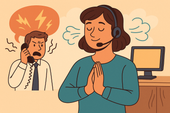
How to Handle Customer Service Stress Without Losing Your Cool 💬🧘♀️
Customer service can test even the calmest person’s patience. 😤 Learn how to handle difficult clients and daily pressure without losing your cool — through better mindset management, calming breathwork, and practical communication tools. Stay grounded, protect your energy, and transform stress into strength. 🌿
-
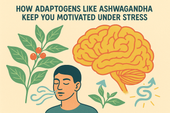
How Adaptogens Like Ashwagandha Keep You Motivated Under Stress
Feeling overwhelmed and unmotivated? 🌿 Discover how adaptogens like Ashwagandha can help you stay centered, focused, and energized under stress. Learn how supplements, breathwork, and therapy work together to restore your natural motivation and help you thrive — even during life’s toughest moments. 💪✨
-
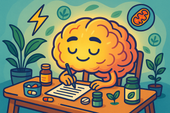
Supplements That Support Long-Term Productivity Without the Crash ⚡🌿
Cortisol — your body’s main stress hormone — can be both your best friend and worst enemy. ⚡ When balanced, it keeps you focused, energized, and ready to act. But when it stays high for too long, it leads to fatigue, anxiety, and emotional crashes. Learn how to regulate cortisol naturally through supplements, sleep, and stress management to maintain calm, steady productivity. 🌿
-
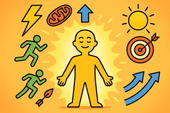
Why Energy Levels and Motivation Go Hand in Hand ⚡🧠
B-vitamins are the brain’s spark plugs 🔋. They turn food into fuel, support neurotransmitter production, and keep your mood, energy, and focus balanced. Learn how vitamins like B6, B9, and B12 work together to power the nervous system, reduce fatigue, and keep motivation high. 🌿
-

The Science of Motivation: Can Nootropics Help You Stay Focused? 🧠⚡
Nootropics are nature’s tools for sharper thinking and sustainable focus 🧠🌿. From Rhodiola and Lion’s Mane to L-theanine and Bacopa, these brain-boosting compounds enhance motivation, memory, and stress resilience. Learn the science behind how nootropics work — and how to use them safely for peak mental performance and clarity. ⚡
-

How Natural Supplements Can Boost Your Daily Drive
Cortisol is your body’s main stress hormone — powerful, necessary, but often misunderstood. ⚡ When balanced, it keeps you alert and energized; when chronically elevated, it drains mood, motivation, and focus. Learn how to regulate cortisol naturally through nutrition, supplements, and calming lifestyle habits for steady energy and emotional balance. 🌿
-
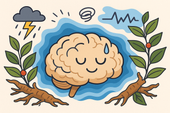
Ashwagandha for Stress and Low Mood
Breathwork is more than a relaxation tool — it’s a way to rewire your nervous system. 🌬️ Through intentional breathing, you can reduce stress hormones, improve focus, and calm emotional turbulence. This guide explores the science of breathwork and its powerful effects on mental clarity, resilience, and emotional regulation. 🌿
-

Mood-Boosting Smoothie Recipes
Your blood sugar affects far more than energy — it influences mood, focus, and emotional stability too 🍎. Learn how maintaining balanced glucose levels supports brain health, reduces anxiety, and prevents emotional crashes. Discover the foods and habits that keep your mind calm and your energy steady throughout the day. 🌿
-
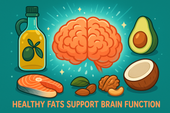
How Healthy Fats Support Brain Function
Your brain thrives on healthy fats 🧠💧. From omega-3s to MCTs, the right fats enhance focus, memory, and mood while protecting against inflammation and aging. This article explores how good fats — like those from olive oil, salmon, avocado, and nuts — build sharper thinking, emotional balance, and lasting brain vitality. 🌿
-

The Role of Protein in Mental Clarity
Protein isn’t just for muscles — it’s for your mind. 🧠 This guide explores how amino acids from high-quality protein fuel neurotransmitters, stabilize mood, and sharpen focus. Learn how balanced protein intake supports dopamine, serotonin, and energy regulation to boost mental clarity and emotional stability naturally. 🍳🌿
-

Nutrients That Support Emotional Stability
Your emotions are built from nutrients as much as from thoughts 🌿. This science-backed guide reveals the vitamins, minerals, and healthy fats that stabilize mood and reduce stress — from B-vitamins and magnesium to omega-3s and probiotics. Learn how balanced nutrition supports neurotransmitters, strengthens resilience, and promotes lasting calm and clarity 🧠✨.
-
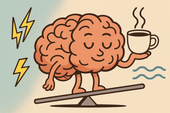
How Caffeine Affects Your Mood ☕
Your morning coffee might lift your spirits — but what’s really happening inside your brain? ☕ This in-depth guide explores how caffeine affects mood, motivation, dopamine, and stress. Learn how to enjoy caffeine mindfully without triggering anxiety, burnout, or emotional crashes. Discover the science behind your energy highs and lows — and how to find calm, sustainable focus. 🌿
-
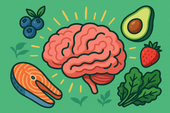
The Best Anti-Inflammatory Diet for Mental Health
Inflammation doesn’t just affect your body — it impacts your mood, focus, and emotional resilience too 🌿. This comprehensive guide reveals how an anti-inflammatory diet can support mental health by reducing neuroinflammation, balancing gut bacteria, and stabilizing blood sugar. Learn which foods to eat (and which to avoid) to protect your brain, boost serotonin, and promote lasting calm. 🧠✨
-
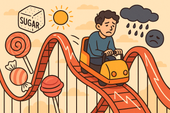
Why Sugar Spikes Can Worsen Depression
Sugar highs can make you feel good for a moment — but what comes next can fuel emotional crashes and deepen depression 🍭. This article explains how blood sugar spikes disrupt brain chemistry, increase inflammation, and destabilize serotonin. Learn how food, supplements, breathwork, and therapy can help you break the sugar–mood cycle and restore lasting emotional balance 🌿.
-

Foods That Naturally Boost Serotonin
Serotonin isn’t just a brain chemical — it’s your body’s built-in mood stabilizer 🌞. This in-depth guide explores how natural foods like salmon, eggs, bananas, and dark chocolate can elevate serotonin levels, while gut health, key nutrients, supplements, breathwork, and therapy create the perfect synergy for calm and emotional balance. Learn how to support your mind through diet, lifestyle, and mindset — naturally. 🌿
-
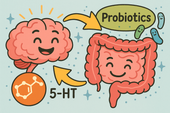
Probiotics for Mood Balance
-
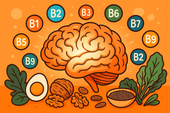
B-Vitamins and Their Role in Mental Health
Methylation is one of your body’s most important biochemical processes — influencing mood, energy, and focus. Powered by B-vitamins like B6, B9, and B12, it helps your brain create serotonin, detox efficiently, and maintain emotional balance. 🌿
-
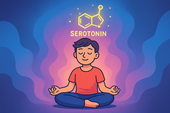
5-HTP for Serotonin Support
Calm isn’t just an emotion — it’s a physiological state where your body and mind finally sync in peace. By slowing your breath, softening your thoughts, and creating safety within, you restore the deep relaxation your nervous system craves. 🌿
-
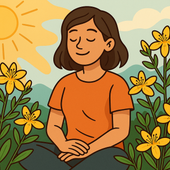
St. John’s Wort for Mild Depression
Antidepressants can be life-changing for many — but understanding how they work and what natural options like St. John’s Wort can complement them is key. Learn how both approaches affect brain chemistry, mood balance, and long-term emotional wellness. 🌿
-

SAM-e: A Natural Mood Booster
Emotional regulation is the art of staying calm and grounded, even when life feels chaotic. By balancing your brain, body, and breath, you can respond with clarity instead of reacting from stress — building real emotional resilience and inner peace. 🌿
-

Rhodiola Rosea for Emotional Resilience
Neuroplasticity is your brain’s ability to grow, adapt, and heal — even after stress or trauma. Every thought, emotion, and habit reshapes your neural pathways, helping you build stronger emotional resilience, sharper focus, and lasting mental balance. 🌿
-
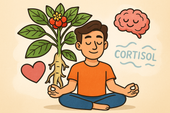
Ashwagandha for Stress and Low Mood
Adaptogens are nature’s stress balancers — powerful herbs like ashwagandha, rhodiola, and reishi that help your body adapt to tension, fatigue, and change. By regulating cortisol and supporting your nervous system, they build calm focus and emotional resilience from the inside out. 🌙
-
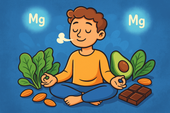
Magnesium’s Role in Emotional Regulation
Neuroscience helps us understand why we feel, think, and react the way we do. From brain chemistry and neural circuits to stress responses and emotional learning, the science of the brain reveals how our minds can heal, grow, and find balance. 🌿
-

Omega-3 Fatty Acids and Emotional Well-Being
Nutrients aren’t just fuel — they’re communication signals that tell your brain and body how to function. From magnesium and vitamin D to omega-3s and B vitamins, the right mix of nutrients helps calm your mind, balance hormones, and support emotional and physical well-being. 🌙
-

The Role of Tryptophan in Sleep Health
Mental health isn’t just the absence of illness — it’s the foundation of calm, focus, and emotional resilience. From managing stress and anxiety to nurturing self-compassion, understanding your mental well-being is the first step toward a balanced, more peaceful life. 🌿
-

Nutrients That Promote Nighttime Relaxation
Potassium does more than balance fluids — it also helps your body and mind relax at night. By calming nerves, reducing muscle tension, and supporting steady heart rhythm, potassium-rich foods like bananas, sweet potatoes, and coconut water can promote deeper, more restful sleep. 🌙
-

Sleep-Friendly Smoothie Recipes
Melatonin is your body’s natural sleep signal — a hormone that tells your brain when it’s time to rest. Learn how melatonin works, which foods and habits boost its production, and how to use it wisely for deeper, more restorative sleep without dependence. 💤
-
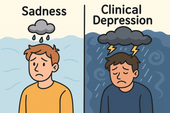
The Difference Between Sadness and Clinical Depression
Your emotions aren’t just in your mind — they’re written in your brain chemistry. Serotonin, dopamine, and GABA work together to regulate mood, motivation, and calm. When they fall out of balance, you may feel anxious, fatigued, or low. Learn how these brain chemicals influence your mental health and what you can do to restore harmony naturally. 🌿
-
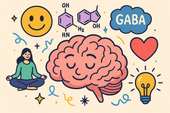
How Brain Chemistry Influences Mood
Your brain is a symphony of neurotransmitters — serotonin, dopamine, GABA, and more — working together to shape how you think and feel. When they’re balanced, you experience calm focus and emotional stability. When they’re not, mood swings and fatigue can follow. Learn how to naturally support these vital messengers for better mood and mental clarity. 🌿
-
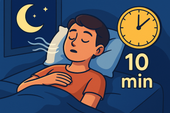
How to Fall Asleep in Under 10 Minutes
The military knows a few secrets about falling asleep fast — and they work even in chaos. This article explores the science behind rapid relaxation, including the famous “Military Sleep Method,” which teaches your body to shut down stress and rest on command. Learn how discipline, breath, and focus can help anyone fall asleep in minutes. 🌙
-
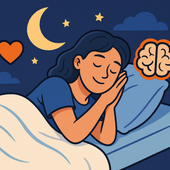
Why Emotional Resilience Improves Sleep
Emotional resilience isn’t just about mental strength—it’s also a key ingredient for better sleep. When your emotions are balanced, your body releases fewer stress hormones, your mind quiets faster, and your sleep becomes deeper and more restorative. Learn how to cultivate calm through mindset, breathwork, and daily habits. 🌙
-
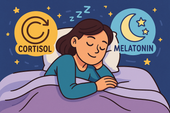
The Connection Between Stress Hormones and Sleep
Chronic stress can quietly reshape your body’s chemistry, raising cortisol, disrupting sleep, and draining your energy. This guide explores how long-term stress affects your nervous system, hormones, and rest—and how to restore calm through breathwork, nutrition, and daily recovery rituals. 🌿
-
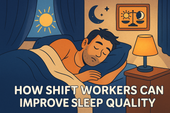
How Shift Workers Can Improve Sleep Quality
For shift workers, caffeine can be both a lifeline and a sleep disruptor. Learn how to use it strategically—boosting alertness during work hours without sabotaging rest. This guide explores timing, dosage, and smarter natural alternatives to keep your energy steady and your sleep restorative. 🌙
-
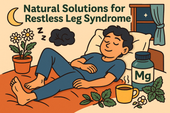
Natural Solutions for Restless Leg Syndrome (RLS)
Struggling to sleep deeply and wake refreshed? This soothing guide explores how the body restores itself during quality sleep—and how to support it naturally. Learn about the science of rest, the role of nutrients, and the rituals that promote deep, uninterrupted slumber. 🌙
-
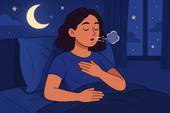
How to Overcome Middle-of-the-Night Anxiety
Middle-of-the-night anxiety can make even the calmest mind spiral into worry. This guide reveals practical, evidence-based techniques to help you stop the 3 A.M. overthinking loop—from breathwork and journaling to herbal supplements and therapy-based tools. Learn to retrain your nervous system and find peace when the world is asleep. 🌙
-
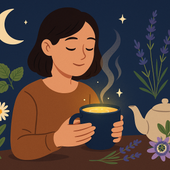
The Perfect Evening Herbal Blend
Discover the calming power of nature in your teacup. The perfect evening herbal blend combines chamomile, lemon balm, lavender, and adaptogens like ashwagandha to relax your body and quiet your mind before bed. Learn how to craft and customize a soothing, sleep-enhancing tea ritual that helps you unwind, restore, and wake up refreshed. 🌙
-
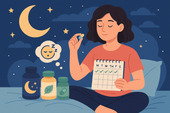
How to Cycle Sleep Supplements for Maximum Effectiveness
Wondering why your sleep supplements stop working after a while? This guide breaks down how to cycle sleep aids like melatonin, magnesium, and ashwagandha for consistent, long-term results. Learn when to rest your body, how to prevent tolerance, and what natural methods—like breathwork and therapy—enhance your sleep cycles. 🌙
-
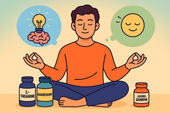
The Best Supplements for Both Relaxation and Focus
Calm your mind and sharpen your focus with the perfect blend of natural supplements. From L-theanine and magnesium to Rhodiola and Lion’s Mane, this science-based guide shows how to achieve relaxation and clarity at the same time. Discover stacks that support your nervous system, balance mood, and keep your mind laser-focused without the crash. 🌿
-
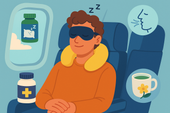
How to Sleep Better During Travel
Traveling can be thrilling—but sleepless nights can ruin even the best trips. From supplements like magnesium and melatonin to soothing breathwork and therapy-based techniques, this guide shows you how to sleep deeply on planes, in hotels, or across time zones. Learn to calm your body, reset your circadian rhythm, and build rest rituals that work anywhere in the world 🌙
-
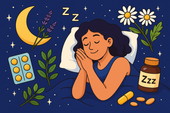
Improving Sleep in Menopause with Supplements
Menopause can make peaceful sleep feel impossible — but balance is within reach 🌿. This article explores how supplements like magnesium, ashwagandha, and black cohosh can ease night sweats, calm the mind, and restore your natural sleep rhythm during hormonal changes.
-
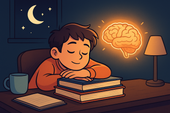
Sleep Support for Students During Exams
Exam stress can make it hard to rest — but sleep is what helps you perform your best 💤. This article explains how to improve sleep quality during exams through better study habits, natural supplements, breathwork, and therapy tools to calm the mind and sharpen focus.
-
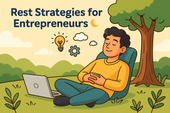
Rest Strategies for Entrepreneurs
Entrepreneurs often burn out chasing their vision — but rest is the real fuel for success 🌙. This article explores science-backed recovery strategies for founders, including sleep, breathwork, therapy, and nutrition techniques that sharpen creativity and sustain performance.
-

How Sleep Affects Athletic Recovery
Sleep is where strength is built. 💤 This article explores how deep sleep drives muscle recovery, hormonal balance, and athletic performance — plus how supplements like magnesium, melatonin, and ashwagandha can enhance overnight repair and boost training results.
-

Better Sleep for People with Chronic Pain
Living with chronic pain makes sleep feel impossible — but it’s not. 🌙 This article explores how pain disrupts rest and how to rebuild your sleep through gentle breathwork, calming nutrition, therapy, and supplements that help your body relax and heal.
-

How to Sleep Better During Seasonal Changes
Seasonal shifts can throw your sleep off balance 🌦️. This article explains how light, temperature, and hormones change with the seasons — and how to restore your rhythm naturally through melatonin-supportive foods, breathwork, and therapy for emotional balance.
-

Foods That Naturally Boost Melatonin
Want to fall asleep faster without supplements? 🌙 This article explores how foods like tart cherries, pistachios, and kiwi naturally boost melatonin, the hormone that regulates sleep. Learn how to build an evening meal plan — plus simple rituals like breathwork and herbal tea — to improve rest and reset your circadian rhythm.
-

The Role of Herbal Tea in Relaxation
Herbal tea is more than comfort in a cup 🍵 — it’s nature’s gentle way to calm the mind and relax the body. This article explores how teas like chamomile, lavender, and lemon balm support stress relief, sleep quality, and emotional balance — plus how to pair them with magnesium, breathwork, and mindful rituals for deeper peace.
-

Lavender Extract and Its Calming Effects
Lavender extract is one of nature’s most soothing remedies 🌸. This article explores how lavender calms the nervous system, lowers cortisol, and improves sleep — plus how to combine it with magnesium, breathwork, and therapy for deep relaxation and emotional balance.

















































